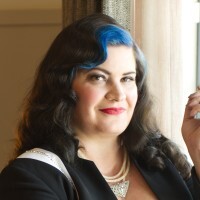FACILITY PROFESSIONAL SPOTHLIGHT
Nina Tall

How did you get into FM/ Accidental FM?
My previous position was Director of Auxiliary Services for another university. So, I had extensive experience coordinating with vendors, handling mechanical upkeep of things like the coffee shop, and worked closely with the Director of FM at that institution. Having just attained my masters in higher education administration, it was not really my intention to move into facilities, but when the Director of Portland Campus Operations position opened at Linfield University, I knew it was a good career move. A large majority of my position now is FM work. I have found that my bachelor’s degree in industrial design has helped me quite a bit when confronting a problem I haven’t had to deal with before, but I sought out the FMP certification to help fill my the knowledge gaps.
One off weird experience in the industry
Linfield purchased this campus in the last few years. I used to work for the previous owners of our Portland campus which means I have a lot of random historical knowledge about this campus and know some of its unique quirks. For example, I can tell you why the toggle switches for the stage lights are in the women’s locker room! When we purchased this campus, it came equipped with an anatomy lab and a morgue. We don’t use them as part of Linfield’s nursing curriculum, so we lease them to the previous owner. I’ve learned that I need to be very specific with vendors about the location and contents of those spaces, because some refuse to step foot in the door.
A highlight of your Facility or Operation
Linfield University has campuses in McMinnville and Portland, Oregon, as well as an e-Campus. I currently oversee operations at the Portland campus, home to the School of Nursing {SON). Linfield moved to this location in NE Portland in February 2021. Prior to moving in, Linfield completely renovated two buildings to create our Experiential Learning Center {ELC). The ELC consists of a high-fi building, which fully simulates hospital rooms and medical carts, while the low-fi building contains hospital beds and training equipment. These spaces create the most realistic experience possible for our nursing students, who work on medical manikins (voiced by unseen actors) that can bleed and give birth, among other functions, as well as on standardized patients (actors). These simulations are recorded from multiple angles; afterward, students are able to review and analyze them with instructors. Our campus is nestled inside the Russell neighborhood in NE Portland and is a mix of buildings erected from 1952-2011. Our green spaces are open to the neighborhood during the day.

